
The production of a yacht is a complex and lengthy process. We recently talked about how yachts are made. Today we will talk about what yachts are made of. Believe me, there are several interesting points in this question. We continue to dive into the history of yachting with Interparus!
Throughout the history of shipbuilding, various materials have been used to build boats. The best way to trace the use of these materials is to look at specific examples. You may be surprised, but many of the techniques used by shipbuilders hundreds of years ago are still used today.
WoodFor thousands of years, wood has been the most popular material for building boats, boats and ships.
As early as the time of Early Egypt, people built boats from wood. For the most part, affordable, easily processed material is firmly entrenched in shipbuilding. On the other hand, this is obvious - then people simply did not have a better analogue of wood. No other material had such buoyancy and versatility.
Until now, there are many shipbuilders who create boats from wood. Many believe that they work in gloomy sheds and workshops, creating pilot boats, row skiffs and other iconic vessels of yesteryear. Of course, this has not been the case for a long time.
Those sheds and dimly lit workshops have been replaced by modern and spacious hangars and pavilions where shipbuilders can work all year round. Consider the production of wooden yachts on the example of two major market players.
Spirit yachtsPerhaps the most famous manufacturer of wooden ships is the company Spirit yachts from Ipswich. She builds quite modern ships from composite wood.
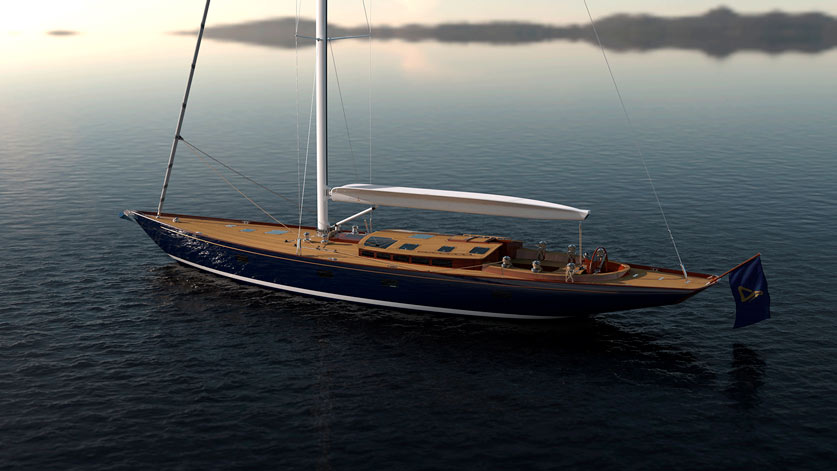
“Of course we use epoxy to bond the components together, but the amount of resin used is negligible compared to fiberglass or carbon fiber,” says founder and chief designer Sean McMillan.
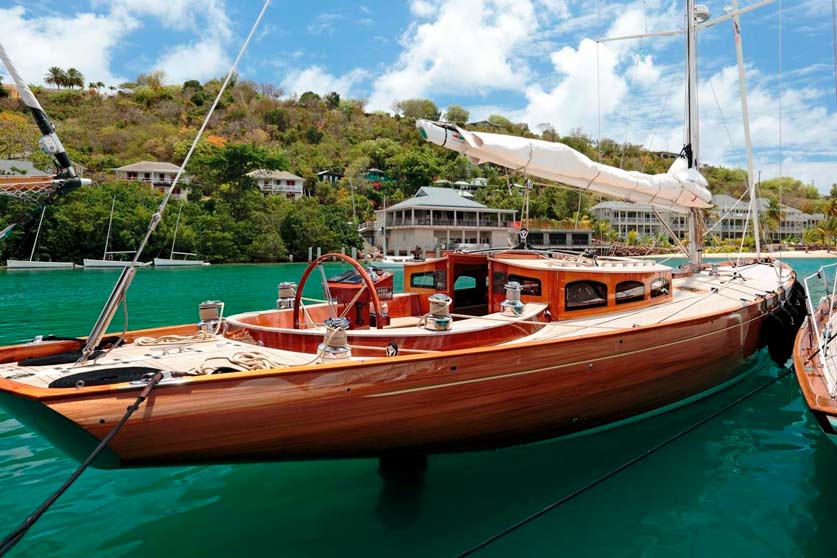
“Both carbon fiber and fiberglass are completely dependent on saturation with high density polyester or epoxy resins. This is necessary to give structural integrity. Wood, although a fibrous material, has a cross-linked cellular structure. This structure is completely natural and has complete structural integrity in itself.
Rm yachts Another example is a French manufacturer Rm yachts. Boats from Rm yachts known for their speed. The basis of their cases is recycled wood, plywood and epoxy resin.
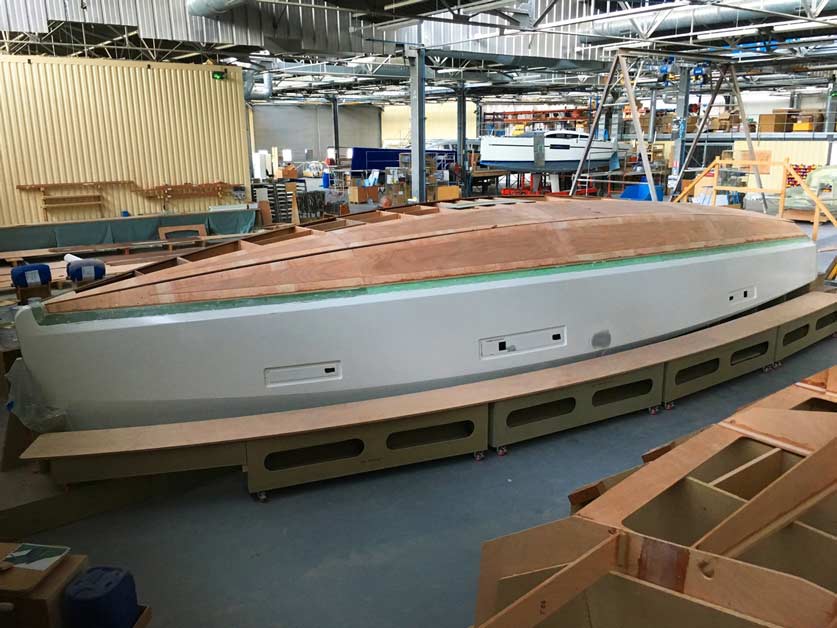
Sheets of laser-cut Okoumé plywood, up to 22mm thick, are bent around the mold and epoxy bonded to the plywood structural members. Further, the entire structure is also coated with epoxy for durability.
Thanks to this technology, the weight of the new RM 1380 is 9.8 tons - slightly less than the similar X4-6 from X-Yachts.
Edouard Delamare, Head of Engineering Rm yachts, says: "Plywood is the soul of RM." Indeed, plywood and recycled wood are a very comfortable material that combines good rigidity and lightness. It is an ideal ideal for building hull and structure. But plywood is nothing without epoxy because it provides waterproofing.
Building boats with fiberglassWhen people discovered the full power of chemistry and artificially synthesized materials, a new age began in the era of shipbuilding and yachting.
Many serial shipyards, from Beneteau before Bavaria, still use the simplest and most reliable boat building technology. Its essence lies in the creation of a matrix (form) in which fiberglass with an interlayer is laid layer by layer. They, in turn, are impregnated with epoxy resin.

The cases are extremely durable and reliable. Alas, this method also has disadvantages. During the application of epoxy between the layers of fiberglass and the interlayer, "air pockets" may occur. These cavities are air bubbles that can become potentially hazardous to the structure in the event of unforeseen loads.
In order to avoid problems, the cases are glued with epoxy, as they say, with a margin. So the case, even with these “pockets”, will remain strong. At the same time, the mass of the body increases proportionally.
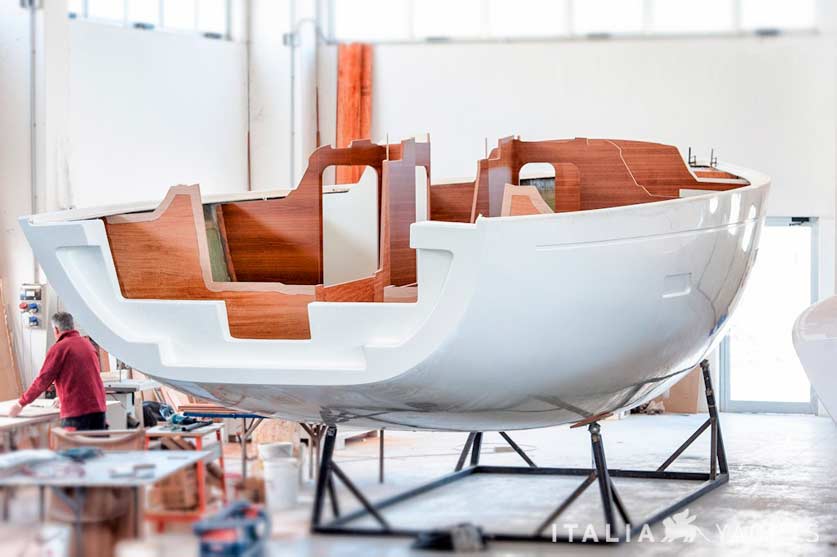
So, the boats have become stronger and more durable. And at the same time, it’s cheaper - it’s more expensive to cut down and process a small wood of wood than to make a fiberglass hull.
Infusion technologyIn 1990, vacuum infusion became an industrial technology. It allowed shipbuilders to use less resin and spread it more evenly over the finished mold to improve hull strength.
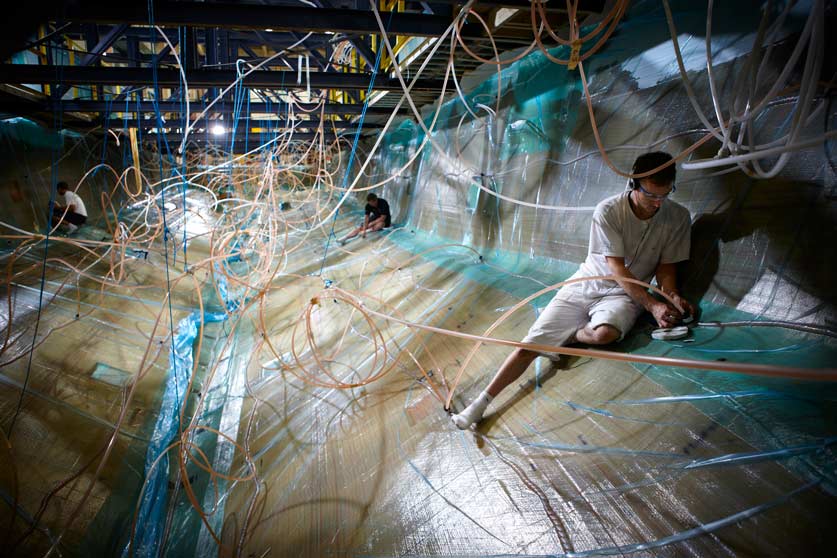
The essence of the technology in theory is quite simple: fiberglass is molded using a vacuum film, which helps to more evenly lay and impregnate fiberglass with epoxy.
after applying the next layer of fiberglass, a vacuum is created. Then the resin applied to the fiberglass layer is evenly distributed over the entire surface of the layer, preventing the appearance of “air pockets”. The process is repeated until all layers are laid.
So the yachts are lighter than with the classic laying of fiberglass, but the environmental damage increases many times over. Scientists continue to work on reducing emissions from infusion styling. Technology does not stand still and has already managed to reduce the risks of environmental pollution to a minimum.
CarbonAlso commonly used are aramid materials such as Twaron and Kevlar, as well as individual carbon fiber. Company Balticbuilding high end yachts uses carbon reinforcement. Carbon is the perfect solution if you want to increase strength without increasing the weight of the yacht.

Catamaran manufacturer Catana uses twaron and carbon in its skins to save hundreds of pounds. In this way, it was possible to lighten the latest models of catamarans. Catana 47 almost 700 kg. Naturally, carbon is still the most advanced material as it combines strength, rigidity and low weight.
Alas, carbon, kevlar and twaron are prohibitively expensive for ordinary yacht manufacturers. In addition, these materials are quite complex and require a separate team of specialists to work with them.
How do you like the material? Don't forget to rate and see other interesting articles on our site!
Source